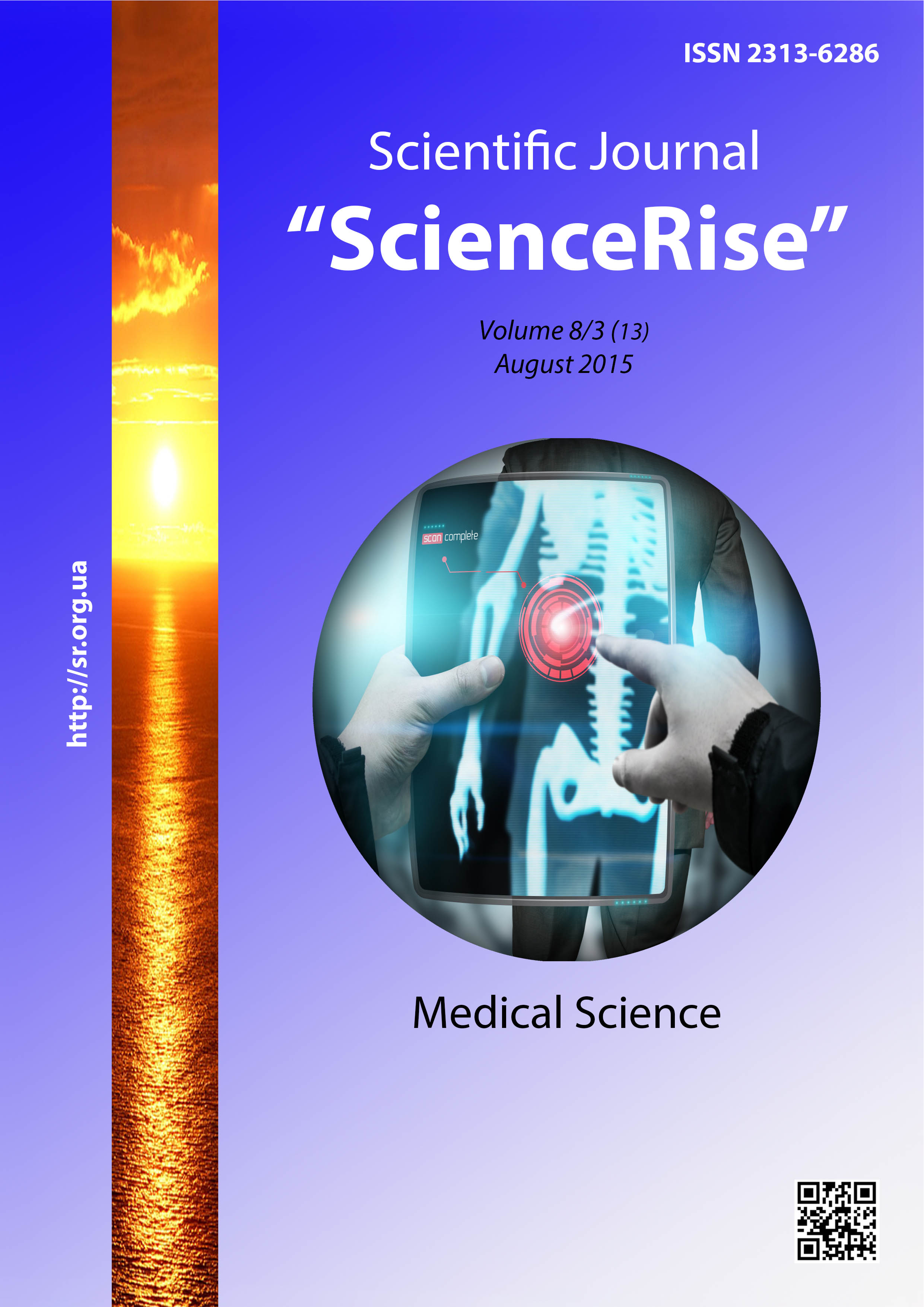Clinical and psychopathological features of paranoid schizophrenia in patients with comorbid bone tuberculosis in terms of their psychosocial rehabilitation
DOI:
https://doi.org/10.15587/2313-8416.2015.48044Keywords:
paranoid schizophrenia, bone tuberculosis, comorbidity, positive, negative and general psychopathological symptomatologyAbstract
Aim – to analyze the features of clinical and psychopathological symptomatology of paranoid schizophrenia (PS) in patients with comorbid bone tuberculosis (CBT) in terms of detecting an influence of the main maladjustment indicators that lead to problems in patients functioning as the targets of measures for their psychosocial rehabilitation.
Contingent. 120 men with paranoid schizophrenia (PS). 60 patients with PS and comorbid bone tuberculosis (CBT) formed the main group of research, 60 patients with PS formed the comparative one.
Methods. The main method of research was clinical and psychopathological one that included standardized clinical interview with the use of “Evaluating list of symptoms and glossary for psychical disorders WHO” (1994) (Module F2: psychotic syndrome) that was added with materials of retrospective analysis of medical documentation and the results of using the scale РANSS.
Results. The study of clinical and psychopathological features and the structure of intensity of positive, negative and general psychopathological syndromes of PS with CBT obligatory must be carried out from two points of view: firstly the correction of psychosocial maladjustment that is needs and tasks that appear in rehabilitative work with comorbid patients. So, various in most cases unpredictable character of combination of clinical signs leads to “maladjustment obstacles” in psychosocial rehabilitation. Secondly the neglect of the degree of symptoms intensity at psychosocial rehabilitation leads to decrease of “adaptive potential” and destruction of acquired “general habits of adaptation” at overcoming the problems in functioning as a result of both PS and CBT.
Conclusions. Established features of clinical and psychopathological manifestations of paranoid schizophrenia in patients with comorbid bone tuberculosis were used as a basis at elaboration of complex measures for rehabilitation of given contingent
References
Rieder, H. L., Watson, J. M., Raviglione, M. C., Forssbohm, M., Migliori, G. B., Schwoebel, V., Leitch, A. G., Zellweger, J.-P. (1996). Surveillance of tuberculosis in Europe. European Respiratory Journal, 9 (5), 1097–1104. doi: 10.1183/09031936.96.09051097
Tuberculosis in Ukraine: find, treat, cure all (2015). Pharmacy, 983 (12). Available at: http://www.apteka.ua/article/327618
Borzenko, A., Zubov, E. Y., Yaitsky, Yu. (2007). Evaluating the effectiveness of inpatient treatment for TB care mentally ill, suffering from pulmonary tuberculosis. Journal "Problems of Tuberculosis and Lung Diseases", 6. 37–40.
Asmolov, O. K. (2002). Tuberculosis. Odesa state medical University Press, 276.
Ostroverkha, A., Berezhnaya, L. V., Smith, J. B., Lozinskaya, J. R. et. al. (2012). TB prevention among families and individuals in difficult circumstances: Method. guidances. Lviv: Publishing Public Enterprise "land", 168.
Yurjeva, L. M., Bobro, M. G. (2005). Psychopathological disorders in patients with newly diagnosed lung TB. Tavrych. Zh. Psyhyatryy, 9 (2), 34–37.
Bobro, M. G. (2005). Correction of mental disorders in patients with newly diagnosed lung TB. Medical prospects, X (3), 62–65.
Valetskyy, Y. M. (2005). Psychoneurotic disorders and features of psychology in patients with TB. Infectious hvoroby, 4, 87–90.
Valetskyy, Y. M. (2006). Features of mind and its disorders in patients with pulmonary tuberculosis. Physician. Praktyka, 1, 28–31.
Mosolov, S. N. (2001). Scale psychometric evaluation of symptoms of schizophrenia and the concept of positive and negative disorders. Moscow, 96–144.
Cooper, J. E., Kupera, Dzh. E., Poltavets, D. (2000). Pocket Guide to the ICD-10 Classification of Mental and Behavioural Disorders (with glossary and research diagnostic criteria). Kyiv: Sphere. 464.
Downloads
Published
Issue
Section
License
Copyright (c) 2015 Олександр Васильович Широков, Ірина Дмитрівна Спіріна

This work is licensed under a Creative Commons Attribution 4.0 International License.
Our journal abides by the Creative Commons CC BY copyright rights and permissions for open access journals.
Authors, who are published in this journal, agree to the following conditions:
1. The authors reserve the right to authorship of the work and pass the first publication right of this work to the journal under the terms of a Creative Commons CC BY, which allows others to freely distribute the published research with the obligatory reference to the authors of the original work and the first publication of the work in this journal.
2. The authors have the right to conclude separate supplement agreements that relate to non-exclusive work distribution in the form in which it has been published by the journal (for example, to upload the work to the online storage of the journal or publish it as part of a monograph), provided that the reference to the first publication of the work in this journal is included.

